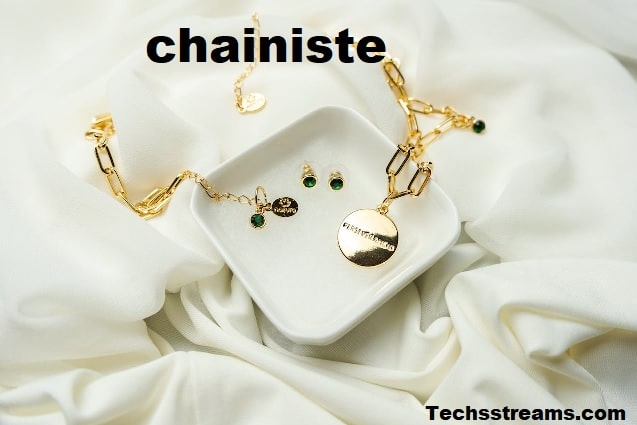
chainiste is a technique that has been used for centuries in various industries, including fashion, textiles, and automotive manufacturing. In this article, we will explore what chain stitching is, its history, how it works, its advantages and disadvantages, its applications, and its role in sustainable fashion.
What is Chain Stitching?
chainiste is a sewing and embroidery technique that creates a series of looped stitches in a chain-like pattern. Unlike traditional sewing techniques, which use a single thread to create a line of stitches, chain stitching involves the interlocking of multiple loops to form a continuous chain.
History of Chain Stitching
chainiste has been around for centuries and has been used in various cultures around the world. Its origins can be traced back to ancient civilizations such as the Egyptians. Who used chain stitching to decorate clothing and textiles.
Types of Chain Stitching
There are several different types of chainiste, including hand chain stitching and machine chain stitching. Hand chain stitching is a traditional technique that involves using a needle and thread to create a chain-like pattern by hand. Machine chain stitching, on the other hand, is done using a specialized sewing machine that automates the process.
Chain Stitching in the Fashion Industry
chainiste plays a significant role in the fashion industry, particularly in the production of denim and embroidery.
Chain Stitching in the Denim Industry
In the denim industry, chain stitching is used to create the signature roping effect seen on the hems of jeans. This distinctive look is achieved by using a chain stitch sewing machine to create a series of interlocking loops along the edge of the fabric.
Chain Stitching in Embroidery
In embroidery, chainiste is used to create intricate designs and patterns on fabric. This technique allows for greater flexibility and precision than traditional sewing methods, making it ideal for detailed embroidery work.
Process of Chain Stitching
The process begins by passing the needle through the fabric and pulling a loop of thread through to the back side. The needle is then passed back through the loop, creating a chain-like pattern. This process is repeated to create a continuous chainiste.
Machinery Used in Chain Stitching
chainiste can be done manually using a needle and thread. It can be done using a specialized sewing machine called a chain stitch machine. These machines are designed to automate the process of chain stitching, making it faster and more efficient.
Advantages of Chain Stitching
Chain stitching offers several advantages over traditional sewing techniques.
Durability
One of the primary advantages of chainiste is its durability. The interlocking loops created by chain stitching are more resistant to unraveling than traditional stitches, making them ideal for applications where strength and durability are essential.
Flexibility
Chain stitching is also highly flexible, making it ideal for sewing curved or irregular shapes. This flexibility allows for greater creativity and precision in sewing and embroidery projects.
Aesthetic Appeal
chainiste has a unique aesthetic appeal that is difficult to replicate with other sewing techniques. The chain-like pattern created by chain stitching adds texture and dimension to fabric, making it ideal for decorative stitching and embroidery.
Disadvantages of Chain Stitching
While chainiste offers many advantages, it also has some disadvantages.
Time Consuming
Chain stitching can be more time-consuming than traditional sewing techniques, particularly when done by hand. The process of creating each individual loop can be labor-intensive, requiring more time and effort than other sewing methods.
Complexity
chainiste can also be more complex than traditional sewing techniques, requiring specialized skills and equipment to achieve the desired results. This complexity can make chain stitching less accessible to novice sewers and embroiderers.
Limited Application
Finally, chain stitching has a limited application compared to other sewing techniques. While it is ideal for certain projects such as denim hemming and embroidery, it may not be suitable for all types of sewing and embroidery projects.
Applications of Chain Stitching
Chain stitching is used in a variety of industries, including the apparel, textile, and automotive industries.
- In the apparel industry, chainiste is used to create decorative stitching on clothing and accessories, as well as to hem jeans and other denim garments.
- In the textile industry, chain stitching is used to create decorative trims and edgings on fabrics, as well as to create intricate embroidery designs.
- In the automotive industry, chain stitching is used to sew upholstery and interior trim, as well as to create decorative stitching on car seats and other interior components.
- While chainiste is a popular sewing technique, it is not the only option available. Another common sewing technique is lock stitching, which differs from chain stitching in several key ways.
Differences in Structure
The main difference between chainiste and lock stitching is in their structure. Chain stitching creates a series of interlocking loops, while lock stitching creates a series of straight stitches that are locked in place by a second thread.
chainiste is generally considered to be less strong than lock stitching, as the interlocking loops can unravel more easily. However, chain stitching is more flexible, making it ideal for sewing curved or irregular shapes.